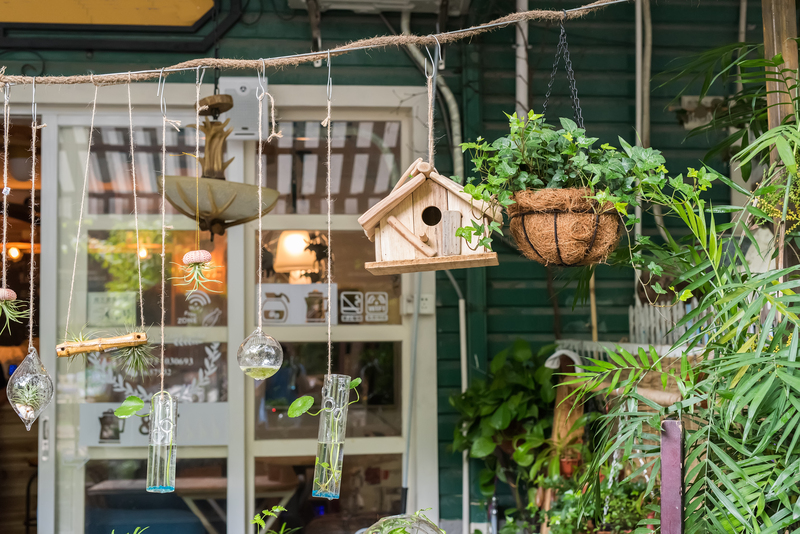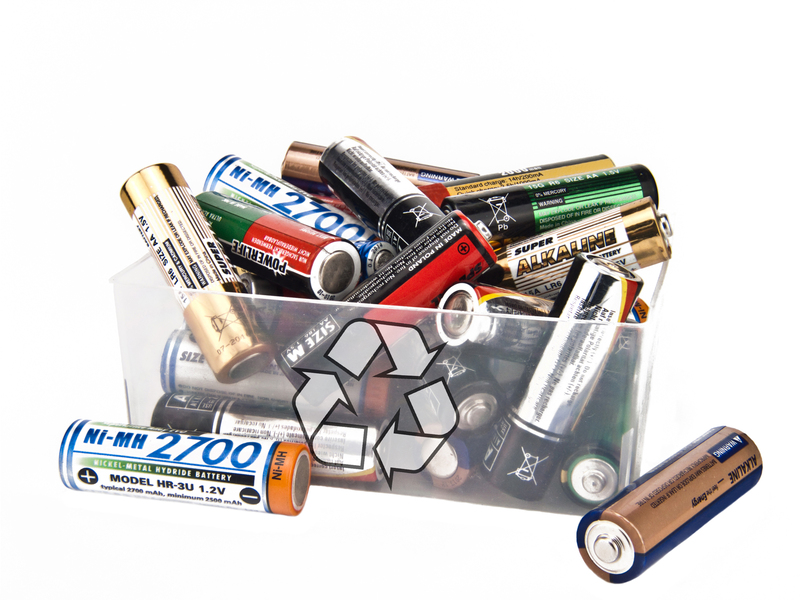Upcycle Your Old Clothes into Fresh Fashion: Sustainable Style for a Greener Future
In an era where sustainability is more important than ever, "upcycling your old clothes into fresh fashion" has emerged as a creative solution to reduce waste and express your individuality. In this comprehensive guide, we'll explore innovative ways to transform outdated garments into trendy, unique pieces. With detailed tips, expert insight, inspiring ideas, and step-by-step instructions, you'll discover how upcycled fashion can refresh your wardrobe, benefit the environment, and define your personal style.

What is Upcycling in Fashion?
The term upcycling refers to the process of taking unwanted items--such as clothes that have fallen out of favor, are damaged, or no longer fit--and transforming them into something new, trendy, and usable. Unlike recycling, which often breaks materials down for reuse, fashion upcycling increases value by redesigning garments, preserving the original material's quality. By upcycling old clothes into stylish, modern pieces, you help decrease landfill waste and embrace eco-friendly living.
Why Upcycle Old Clothes?
- Environmental Impact: The fashion industry is one of the world's largest polluters. Upcycling your old outfits cuts down textile waste and saves natural resources.
- Personal Style: You can express your individuality by creating unique pieces no one else will have.
- Affordability: Upcycling is cost-effective--you'll refresh your fashion without buying new clothes.
- Skill Building: Learn or refine your sewing, dyeing, and designing skills.
- Nostalgia: Give favorite yet outdated garments a second life, preserving beloved memories in a modern way.
Easy Ways to Upcycle Your Wardrobe
Transforming your old wardrobe into fashionable new pieces doesn't have to be overwhelming. Here are some beginner-friendly methods to upcycle old clothes into fresh fashion:
1. Add Embellishments
- Embroidery: Needle and thread work wonders. Stitch floral motifs or trendy patterns onto jeans, jackets, or t-shirts for a boho-chic vibe.
- Iron-on Patches: Decorate with quirky patches to cover up stains or holes and inject personality into worn-out clothing.
- Beading and Sequins: Add sparkle to plain tops, dresses, or collars for a glam touch.
2. Cut and Restyle
- Crop It: Turn oversized t-shirts and sweaters into trendy crop tops or sweatshirts. Simply cut above the hem for a raw edge or sew for a polished look.
- Make Shorts from Jeans: Snip old denim jeans into stylish shorts. Add lace or fringe to the hem for extra flair.
- Transform Dresses: Reimagine outdated dresses by shortening, adding slits, or converting them into skirts or tops.
3. Dye and Paint
- Tie-Dye: Give faded or stained t-shirts a retro revival with colorful tie-dye techniques.
- Fabric Paint: Use fabric paint to add abstract designs, slogans, or art to plain clothes. This method allows unlimited creativity.
- Ombre Dye: Create a subtle, modern look by dipping the lower half of shirts or skirts into dye for a gradient effect.
4. Repurpose Completely
- Tote Bags from T-Shirts: Cut and sew old t-shirts into reusable shopping bags--sustainable, practical, and cool.
- Scarves and Headbands: Convert soft shirts or dresses into chic accessories.
- Pillow Covers and Quilts: For sentimental pieces, create home linens that carry your memories.
Step-by-Step Guide: Upcycling Clothes at Home
Let's walk through a basic process to upcycle your old clothes into fashionable new pieces:
Step 1: Identify What to Upcycle
- Go through your wardrobe and sort items you no longer wear--damaged, outgrown, or outmoded pieces all work.
- Prioritize natural fabrics (cotton, linen, denim) as they're easier to dye, sew, or paint.
Step 2: Get Inspired
- Browse Pinterest, Instagram, or fashion blogs for upcycle ideas. Consider current trends--cuts, colors, embellishments.
- Sketch or jot down ideas that suit your skill level and taste.
Step 3: Prepare Materials
- Gather tools: scissors, fabric glue, sewing kits, needle and thread, dyes, paints, embellishments (buttons, patches, lace).
- If sewing isn't your forte, fabric glue and iron-on patches are beginner-friendly alternatives.
Step 4: Transform Your Clothes
- For a Crop Top: Lay the shirt flat, mark your preferred length, and cut. Fold the hem and sew for a clean edge or leave it raw.
- For Tie-Dye: Bind your t-shirt with rubber bands, mix dyes according to instructions, and apply. Let it sit, rinse, and dry for a new, vibrant piece.
- For Embroidery: Draw your design lightly in pencil, thread your needle, and stitch. Online tutorials can help with techniques.
Step 5: Style Your Upcycled Fashion
- Pair your upcycled garments with basics or mix and match for a standout look.
- Share your creations on social media to inspire others--and be proud of your sustainable fashion choices!
Creative Upcycling Ideas for Your Old Clothes
If you crave more inspiration to put your stamp on upcycled fashion pieces, try one of these creative projects:
Turn Button-Down Shirts into Aprons
Upcycle men's or women's button-downs into retro kitchen aprons by trimming sleeves, shaping the body, and adding ties from leftover fabric.
Patchwork Denim Jackets
Combine scraps from jeans, shirts, or fabric remnants to create a one-of-a-kind patchwork jacket--perfect for festival or streetwear styles.
Convert T-Shirts into Dresses or Skirts
Sew several t-shirts together for a color-blocked dress or skirt. This is a fantastic way to use tees in colors that flatter your style.
DIY Scrunchies and Hair Accessories
Use leftover fabric to make scrunchies, headbands, or fabric-covered hair ties. They're fun, functional, and great gifts.
Make Tote Bags from Jeans
Sturdy denim is perfect for crafting tote bags--cut and sew along seams, add pockets and handles from the waistband for utility and charm.
Benefits of Upcycling Clothing
1. Environmental Conservation
Traditional fashion contributes significantly to pollution and waste. Upcycling old clothing reduces the demand for new materials, saves water and power, and cuts greenhouse gas emissions.
2. Budget-Friendly Fashion
With upcycling, you avoid fast-fashion cycles and save money. Your creativity--and a few supplies--are all you need for fresh, on-trend outfits.
3. Unique Style Expression
No two upcycled pieces are the same! Show off your individuality with statement garments tailored to your personality.
Tips for Upcycling Success
- Start Small: Begin with simple projects--hems, patches, or tie-dye--to build skills and confidence.
- Use Online Resources: YouTube, blogs, and workshops offer tutorials for every skill level.
- Mix and Match Fabrics: Combine textures and prints for depth and intrigue in your creations.
- Shop Thrift Stores: Source affordable raw material for practice or add variety to your projects.
- Stay Eco-Friendly: Choose chemical-free dyes and sustainable embellishments whenever possible.
Where to Share and Sell Your Upcycled Fashion
Turn your upcycling hobby into a side hustle or join the global sustainable fashion community:
- Social Media: Share your upcycled looks on Instagram, TikTok, or Pinterest using hashtags like #UpcycledFashion #EcoStyle and #FreshFashion.
- Online Marketplaces: Sell your unique pieces on Etsy, Depop, or Poshmark.
- Local Markets: Showcase your work at artisan fairs or pop-up markets in your city.
- Workshops: Host classes online or in person to teach others the art of refreshing wardrobes through upcycling.
Eco-Friendly Upcycled Fashion Brands to Watch
If you're inspired by renewed fashion but not ready to DIY, explore brands making waves with upcycled and repurposed clothing:
- Re/Done: Specialist in reconstructed vintage denim.
- Patagonia Worn Wear: Pioneer in repairing and upcycling outdoor gear.
- Fanfare Label: UK brand using upcycled fabrics for contemporary designs.
Frequently Asked Questions About Upcycling Old Clothes
Is upcycling clothes better than recycling?
Yes--upcycling preserves more of the original fabric's quality and directly keeps garments out of landfills by extending their useful life, rather than breaking them down.
Do I need sewing skills to start upcycling?
No! Many upcycling projects require only fabric glue, iron-on patches, or simple cutting and knotting. Sewing opens more possibilities, but you can start small.
What are the best tools for upcycling fashion at home?
- Sharp scissors
- Needle and thread or a sewing machine (optional)
- Fabric glue and iron-on patches
- Textile paints, dyes, and brushes
- Pins, measuring tape, ruler, and washable markers for planning designs

Conclusion: Transforming Old Clothes Into Fresh Fashion is the New Chic
Upcycling old clothes isn't just a trend--it's a movement that melds creativity, sustainability, and personal style. Whether you refresh your wardrobe with simple embellishments or dive into complex reconstructions, you are helping to create a greener world and a more unique, fulfilling wardrobe. Give your fashion choices new life while reducing waste, one upcycled garment at a time.
Embrace this eco-friendly, money-saving, and endlessly creative approach to fashion. Start your upcycling journey today, and let your closet--and the planet--thank you!